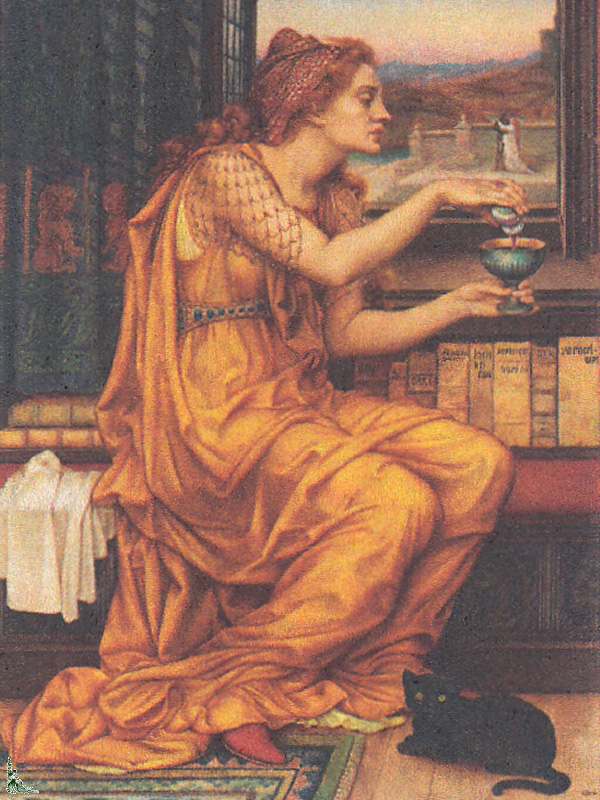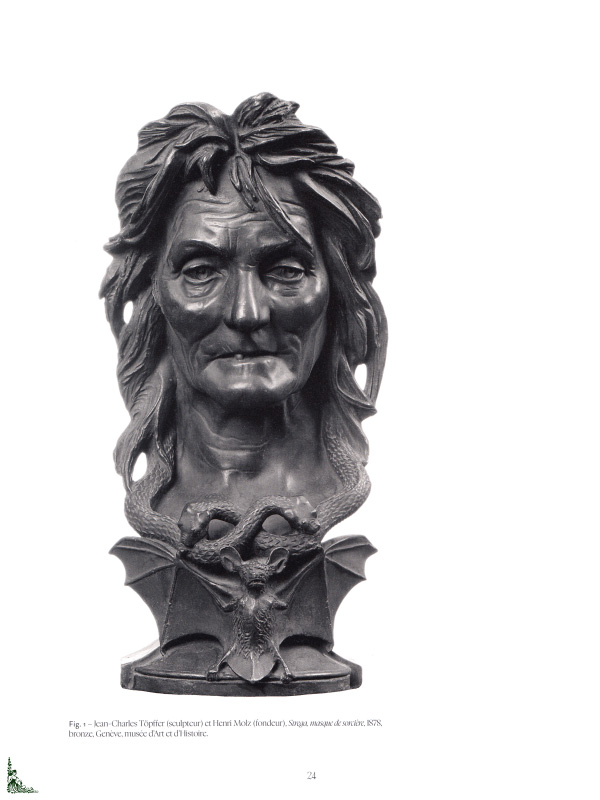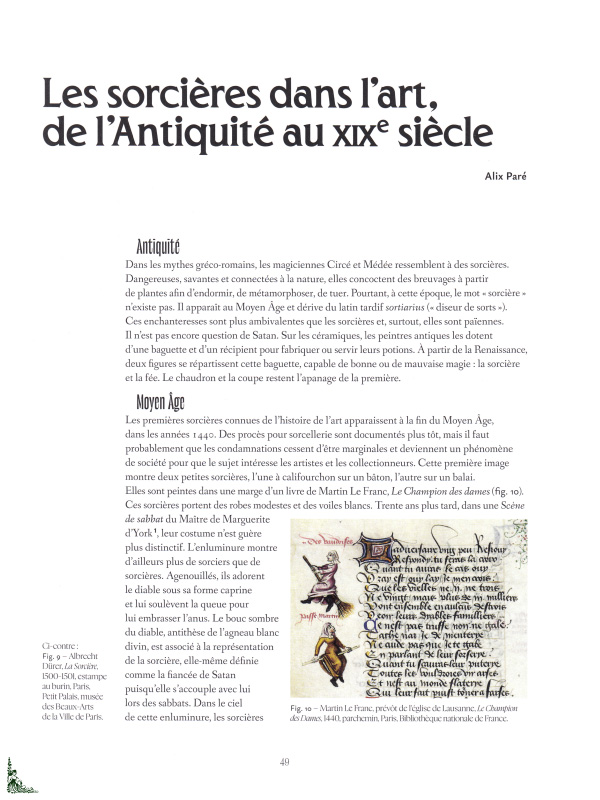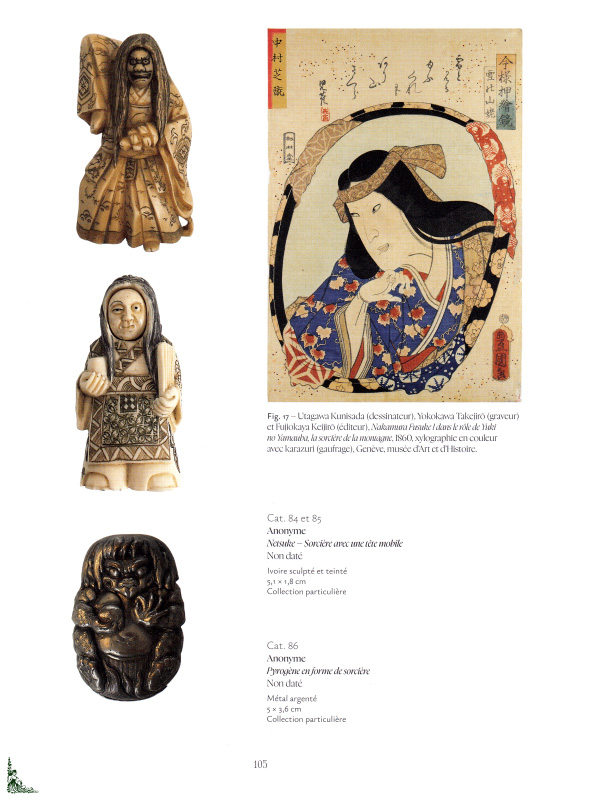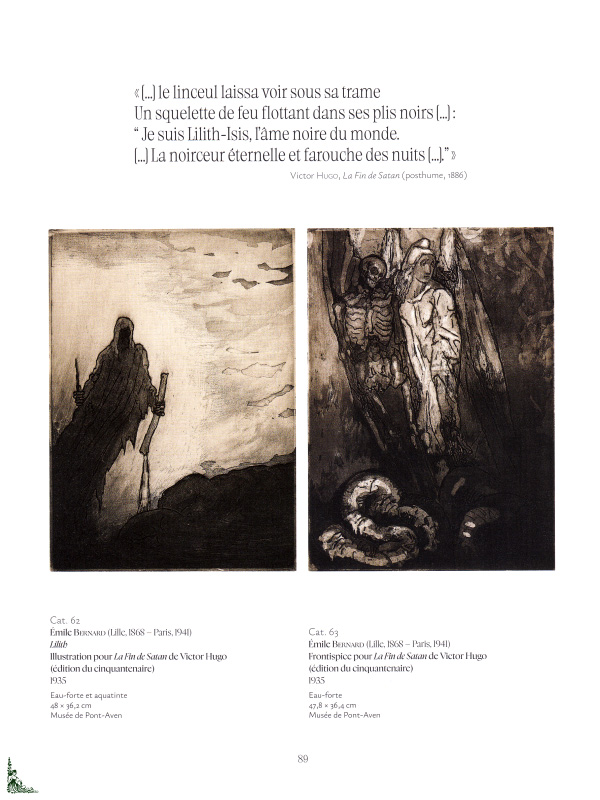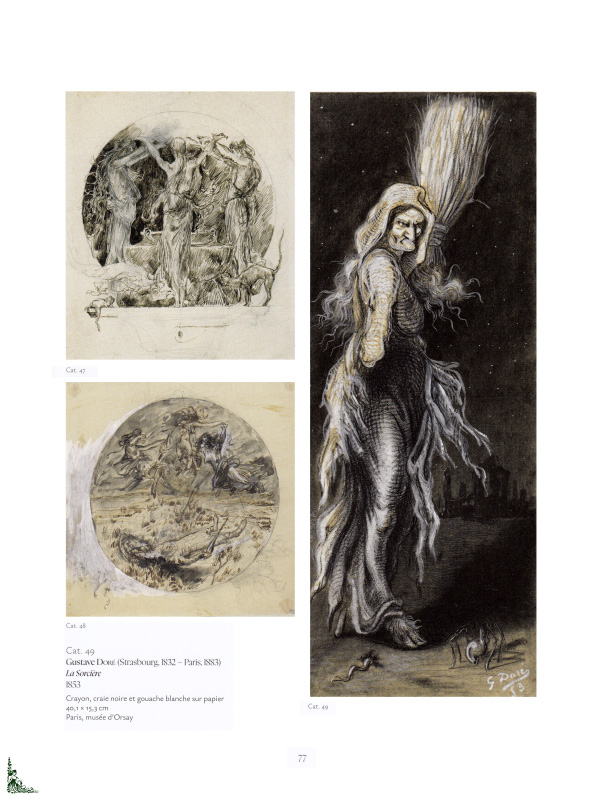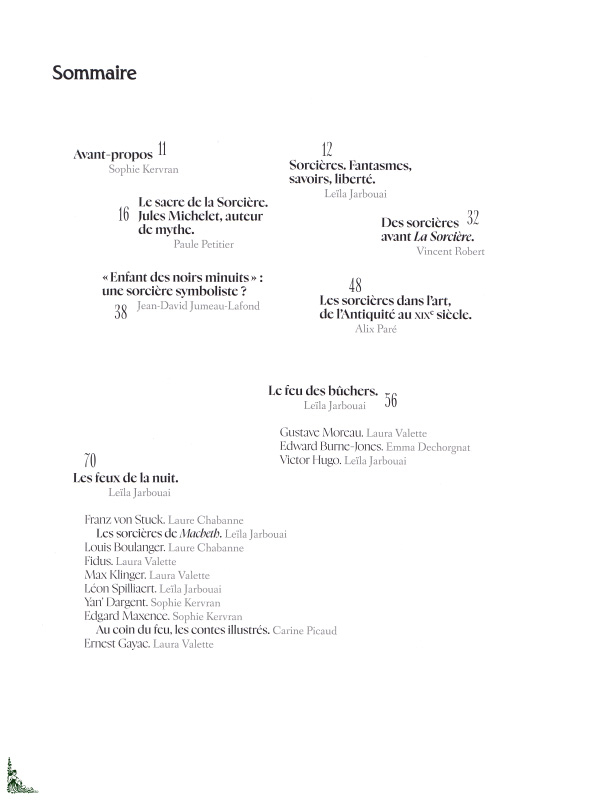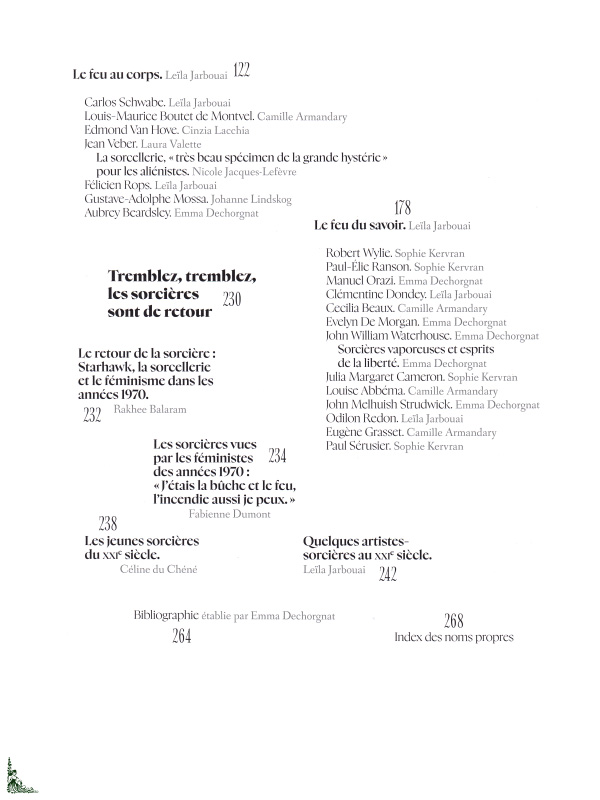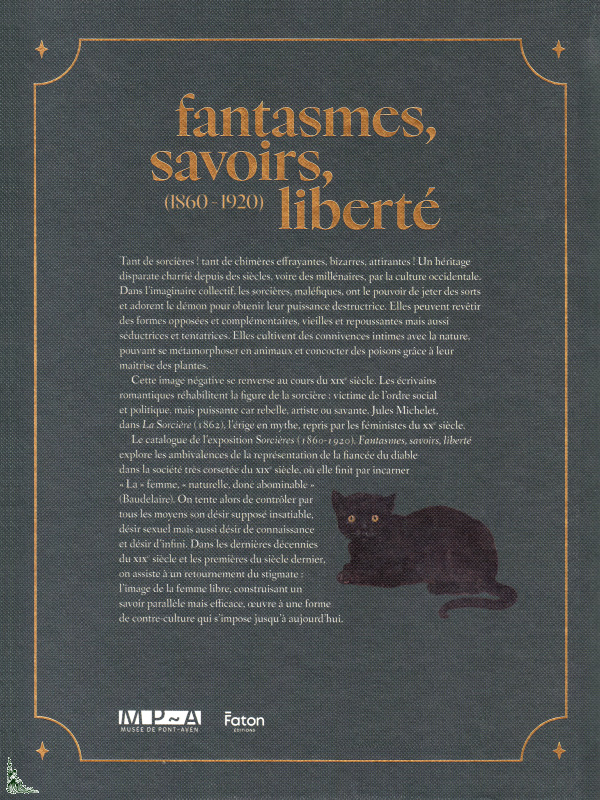Witches! (1860 - 1920), Fantasies, knowledge, freedom
Buchinformationen
| Autoren : | Leïla Jarbouai & Sophie Kervran |
| Herausgeber : | Faton (2025) |
| Bindung : | Hardcover (272 full color pages) 8 inches x 10 inches |
| Sprache : | French |
| ISBN : | 978-2-87844-399-8 |
| EAN : | 9782878443998 |
Beschreibung
Witches! (1860 - 1920), Fantasies, knowledge, freedom, by L. Jarbouai and S. Kervran, Ed. Faton, 8 inches x 10 inches ( 20 cm x 26 cm ), hardcover book with 272 full color pages
This hardcover book with 272 full colour pages presents the figure of the witch in the 19th century.
So many witches! So many frightening, bizarre, attractive chimeras! A disparate heritage burdened for centuries, even millennia, by Western culture.
At the heart of our collective imagination, witches have long embodied the allegory of old age, death, vice, and evil. They are associated with the supernatural, nature, and everything that is frightening and beyond our control.
But 1862 marked a break with the publication of The Witch by the historian Jules Michelet: the witch then becomes at the same time an emblem of revolt, knowledge and harmony with natural elements, laying the foundations of ecofeminism. Re-enchanted, it becomes the symbol of the struggle of the oppressed against arbitrariness. Ambivalent, the witch crystallizes male fantasies in the form of an eroticized icon endowed with eternal youth, thus opposing the ugly old woman of tales and illustrations.
For mostly male artists, the witch evokes the other and the unknown, with its share of attraction and threat.
In a patriarchal society where women are considered minor, the witch personifies the strong woman who threatens the established order and will become a model and symbol for feminists over the next century. She embodies resistance to dominant powers.
Contents:
- Foreword by Sophie Kervran
- Witches. Fantasies, knowledge, freedom, by Leïla Jarbouai
- The Consecration of the Witch. Jules Michelet, author of myth, by Paule Petitier
- Witches before The Witch by Vincent Robert
- « Child of the dark midnights » : a symbolist witch? by Jean-David Jumeau-Lafond
- Witches in Art, from Antiquity to the 19th Century, by Alix Paré
- The fire of the pyres, by Leïla Jarbouai
- The fires of the night, by Leïla Jarbouai
- The fire of the body, by Leïla Jarbouai
- The fire of knowledge, by Leïla Jarbouai
- Tremble, tremble, the witches are back
- The Witch Returns: Starhawk, Witchcraft, and Feminism in the 1970s by Rakhee Balaram
- Witches as seen by feminists of the 1970s:
« I was the log and the fire, the fire too I can. » by Fabienne Dumont - Young Witches of the 21st Century, by Cécile du Chêné
- Some witch artists in the 21st century, by Leïla Jarbouai
- Bibliography
- Index
The French texts are written under the direction of Leïla Jarbouai and Sophie Kervran.
 Description française
Description française
Sorcières ! (1860 - 1920), Fantasmes, savoirs, liberté
Détails du livre
| Auteur : | Leïla Jarbouai & Sophie Kervran |
| Éditeur : | Faton (2025) |
| Reliure : | Relié (272 pages couleurs) 20 cm x 26 cm ( 8 inches x 10 inches ) |
| Langue(s) : | Français |
| ISBN : | 978-2-87844-399-8 |
| EAN : | 9782878443998 |
Description
Sorcières ! (1860 - 1920), Fantasmes, savoirs, liberté, de L. Jarbouai et S. Kervran, Ed. Faton, 20 cm x 26 cm, relié avec 272 pages couleurs
Cet ouvrage de 272 pages couleur présente la figure de la sorcière au XIXe siècle.
Tant de sorcières ! tant de chimères effrayantes, bizarres, attirantes ! Un héritage disparate chargé depuis des siècles, voire des millénaires par la culture occidentale.
Au coeur de notre imaginaire collectif, les sorcières ont longtemps incarné l'allégorie de la vieillesse, de la mort, du vice et du mal. Elles sont associées au surnaturel, à la nature, à ce qui fait peur et que l'on ne maîtrise pas.
Mais 1862 marque une rupture avec la publication de La Sorcière de l'historien Jules Michelet : la sorcière devient alors à la fois un emblème de révolte, de connaissance et d'harmonie avec les éléments naturels, posant les bases de l'écoféminisme. Réenchantée, elle devient le symbole de la lutte des opprimés contre l'arbitraire. Ambivalente, la sorcière cristallise les fantasmes masculins sous forme d'icône érotisée dotée d'une éternelle jeunesse s'opposant ainsi à la vieille femme laide des contes et illustrations.
Pour des artistes majoritairement masculins, la sorcière évoque l'autre et l'inconnu, avec sa part d'attraction et de menace.
Dans une société patriarcale où la femme est considérée comme mineure, la sorcière personnifie la femme forte, qui menace l'ordre établi et deviendra un modèle et un symbole pour les féministes au cours du siècle suivant. Elle incarne la résistance face aux pouvoirs dominants.
Principaux chapitres de l'ouvrage :
- Avant-propos de Sophie Kervran
- Sorcières. Fantasmes, savoirs, liberté, de Leïla Jarbouai
- Le sacre de la Sorcière. Jules Michelet, auteur de mythe, de Paule Petitier
- Des sorcières avant La Sorcière de Vincent Robert
- « Enfant des noirs minuits » : une sorcière symboliste ? de Jean-David Jumeau-Lafond
- Les sorcières dans l'art, de l'antiquité au XIXe siècle, de Alix Paré
- Le feu des buchers, de Leïla Jarbouai
- Les feux de la nuit, de Leïla Jarbouai
- Le feu du corps, de Leïla Jarbouai
- Le feu du savoir, de Leïla Jarbouai
- Tremblez, tremblez, les sorcières sont de retour
- Le retour de la sorcière : Starhawk, la sorcellerie et le féminisme dans les années 1970 de Rakhee Balaram
- Les sorcières vues par les féministes des années 1970 :
« J'étais la bûche et le feu, l'incendie aussi je peux. » de Fabienne Dumont - Les jeunes sorcières du XXIe siècle, de Cécile du Chêné
- Quelques artistes-sorcières au XXIe siècle, de Leïla Jarbouai
- Bibliographie
- Index des noms propres
Les textes en Français sont écrits sous la direction de Leïla Jarbouai et Sophie Kervran.


